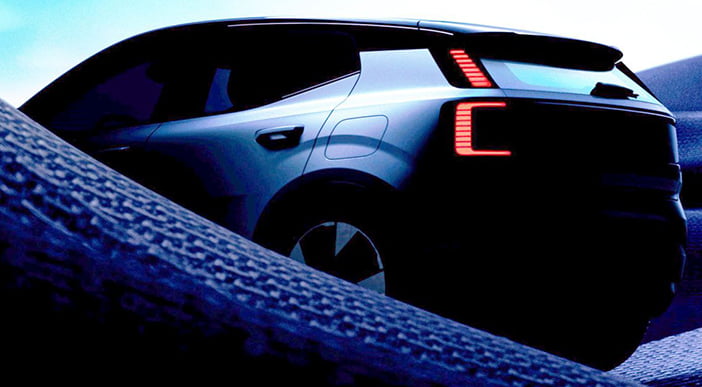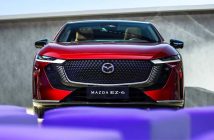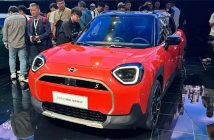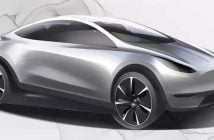+++ AUDI is already working on the next-generation A6 in Limousine and Avant forms, which might adopt the A7 name because the automaker would use even numbers for electric vehicles. The current generations of both the A6 and A7 need to survive for about 2 more years on the market, however, and Audi now gives them more standard features and new customisation options for the European market. Starting with the equipment, both the A6 and A7 now always come with a digital instrument cluster, which is 12.3 inches large and uses full HD technology. That screen is controlled by the steering wheel buttons and provides infotainment information in different modes. In addition, even the base A6 and S6 models receive Audi’s full led headlight technology with led daytime running lights. Last but not least, a more advanced park assist system is now part of the standard equipment. In terms of design, the A6 range is now available with a choice between basic, Advanced and S line exterior packages, while the A7 is sold with either basic or S line packages (but in some countries, like the Netherlands, it has been removed from the line-up). One of the main highlights of each styling pack is the Singleframe radiator grille, which has a different finish depending on the selected package. Updated 18 and 19inch allow wheels are also available. Speaking of new designs and finishes, Audi also says the A6 and A7 families and their respective S derivatives receive Arcona White and Madeira Brown Metallic colours for the first time. A total of 12 exterior colours are available for the 2 model lines, including Grenadine red and Ascari blue for the S models or standard models fitted with the S line package. Inside the cabin, 8 different variants of decorative inlays are available. As mentioned above, there are new wheel options, too. The base A6 comes with new forged 17 inchers and 225/60 tyres, while the largest available wheel size is 21 inches. To answer customer demand for black wheels, Audi says more than half of the variants for both the A6 and A8 now have dark rims. 2 Audi Sport wheel sets in 20- and 21-inch sizes are added to the A7 Sportback’s range. +++
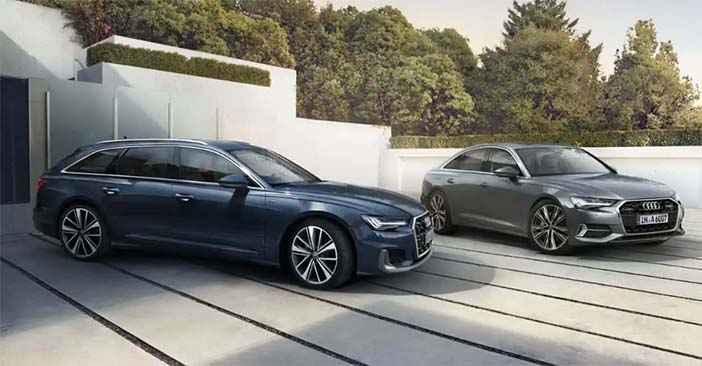
+++ BMW ’s design decisions have been controversial in the last few years, with the German carmaker’s models sometimes wearing huge (illuminated) front grilles and flaunting design elements that aren’t to everyone’s taste. However, this might change soon, as the brand’s chief designer, Adrian van Hooydonk, says future BMW vehicles will have a cleaner look and possibly radiator grilles that aren’t such an eyesore. The automaker’s chief designer, who used to work under the guidance of Chris Bangle (another controversial figure in BMW’s history) says that they “don’t ignore the chatter”. However, with solid sales figures (2.1 million worldwide for the brand as a whole and 177.000 for BMW M alone in 2022), it looks like controversy sits pretty well with the company’s customers. “We feel that in our job, we need to keep adding new elements to the design, we cannot keep repeating what we have. Sometimes we have to depart and do new things. The reason for that is we also want to have success in 10 years”, said van Hooydonk. He adds that the design team has a pretty clear idea of what it’s doing and that it’s not like they’re experimenting or throwing things out there to see what sticks. “It’s a very deliberate process”, he said. When it comes to the grille, the design boss thinks that the brand has done everything from vertical, very slim, to wide and very low, so it can basically do what it wants from here forward, as it has plenty of heritage to back it up. However, a cleaner design is to be expected, as he says: “I think in the future what is going to be important is our design will be cleaner. We will design the grille according to the proportion of the overall vehicle, or according to the expression that we want to give it”. So does this mean the end of over-the-top nostrils? +++
+++ As part of the FARADAY FUTURE FF 91 ’s official launch event, pricing has finally been announced for the luxury electric car. Pricing seems to have only been announced for the 2 highest trims, the FF 91 2.0 Futurist and the first 300 limited edition FF 91 2.0 Futurist Alliance examples. And neither of them is affordable. The Futurist has an MSRP of $249.000 (€335.000 in the Netherlands) and the Futurist Alliance has the starting MSRP of $309.000 (€415.000). Faraday’s press materials and website don’t share a destination charge. Those are pretty enormous prices. To put them into perspective, the top-tier Lucid Air Sapphire matches that Futurist trim at $250,650, with entry-level Airs costing less than $100,000 (€120.000). The Cadillac Celestiq will be in the $300.000 range as well, though it’s also boasting deep personalization with colors, materials and more for customers that would be comparable to Rolls-Royce and Bentley. These Futurist FF 91 models do have some impressive stats to back up the prices. They each have 3 motors making 1.050 hp and 2.000 Nm. Faraday claims these motors will launch an FF 91 to 100 kph in 2.47 seconds. Range is also impressive (though still less than most Lucid models) at 610 km with its 142 kWh battery pack. The Futurist Alliance specifically comes with some exclusive things, besides being the first 300 built, to help justify its premium over the regular Futurist. It’s available in 3 exclusive colors (2 silvers and 1 black) and has unique 22 inch wheels. It also comes with an Apple Watch loaded with an app to control car functions, a day of performance driving instruction at a race track, and some level of personalization for the on-board AI assistant. As a side note, Faraday also announced a subscription service called aiHypercar+. Faraday’s materials were quite vague, but it seems the main draw of the service is AI assistant personalization, vehicle maintenance and some level of internet service for the car. The first 2.000 people to subscribe (with a $100 deposit) will lock in the introductory pricing of (and you’re going to want to sit down for this) $14.900 per year. But back to the actual car. Deliveries of the first models are still not concrete, as far as Faraday’s materials are concerned, though we’ve reached out to see if we can get a real date. The first cars will be going to “Industry Expert FPOs”. I’m not quite sure what that constitutes. I’m guessing they’re pre-order holders with some level of connection to the company or the car industry. These buyers, after paying off the full price of the car to complete their orders, will be able to participate in a “Co-Creation Day”, which seems to be an owner orientation event, on June 6. Finally, Faraday has also re-opened pre-orders to reserve cars in the future. The Futurist Alliance requires a $5.000 deposit and the Futurist requires a $1.500 deposit. The entry-level FF 91 2.0 has a $1.000 deposit and it’s presumably less than a Futurist, but the feature set and price have not yet been announced. +++
+++ LAMBORGHINI exited the old age with a number of big bangs. The Aventador not only got an Ultimate special edition, but also a couple of one-offs with the Invencible and Autentica. The sold-out Huracan is rushing into the sunset in 2 directions: 1 on the road with the 60th Anniversary models and 1 on the dirt with the sensational Sterrato. The brand with all the bull enters the new age with even more pop, attaching an electric motor to its hallmark V12, and remaking the Sant’Agata Bolognese factory that produces the hybrid V12 and the Revuelto two-door wrapped around it. In a video called “Building the Dream,” various members of the Lamborghini family explain how the production process have improved so that everyone can ensure they’re building a better car, better. A fair bit of the Manufattura Lamborghini story reminded us of Maserati’s high-tec production overhaul at the Viale Ciro Menotti facility for the Nettuno V6 in the MC20. Computerized tools deliver repeatable build standards, the engine is built over a set of stations that include new seal testing and a final testing room, the transmission getting its own set of stations and build teams. There’s also a sustainability story inside and outside, with new machines and software enabling more utilization of hides for interiors, CO2-neutral energy runs the plant, and not far away, there’s a small forest with bee hives. The most impressive bit might be the automaker saying the new setup increases the customization options. With Lamborghini building one-offs for clients, we didn’t realize there was anything left to customize. The one line that stuck out to us was when chief manufacturing officer Ranieri Niccoli said there’s a new V12 assembly line “that in the future can accommodate different engines”. That’s called foreshadowing. While we wait to find out what that sentence could mean, grab some gelato and have a watch of the video above. +++
+++ LUCID is raising about $3 billion in a common stock offering with the majority of the money coming from the electric vehicle maker’s Saudi owners after a more than 60% stock slump in the last year. The shares plunged more than 7% in extended trading. The company announced the raise along with a corresponding investment by its owners (Saudi Arabia’s Public Investment Fund; PIF) in a statement. PIF, the kingdom’s largest sovereign wealth fund, is purchasing $1.8 billion of the stock in a private placement. The fund already owns about 60% of California-based Lucid. “Lucid intends to use the net proceeds from the public offering, as well as from the private placement by its majority stockholder, for general corporate purposes”, the company said. PIF first invested in Lucid in 2018, and steadily accumulated more shares until it held a majority ownership when the startup went public in 2021 through a combination with a special purpose acquisition company. The EV maker’s market value temporarily catapulted above established rivals Ford and General Motors that year, and the shares jumped in January this year amid expectation of a buyout by PIF. Analysts say: “The offering at least temporarily undermines hope for a full privatization of the company. The additional funds may help solve financial flexibility issues in the near term, but Lucid may need additional support in 2024”. The Saudi bet on Lucid includes plans to build an EV factory in the country. The kingdom is working toward rolling out hundreds of thousands of cars a year as it looks to become a hub for automakers. It’s a priority for Saudi Arabia, which is trying to diversify its economy away from oil. Its target of making some 300.000 cars by the end of the decade relies on Lucid for half of that production. Lucid has stumbled recently as it grapples with heavy costs, production challenges and competition in the EV market. The company said in March that it would eliminate about 18% of its workforce. This month it guided toward the low end of its annual production plan following a slow start the year. The company has been trying to break out from a crowd of would-be Tesla competitors and firmly establish itself in the EV market. Its market capitalization had briefly eclipsed $90 billion during the market frenzy in 2021 and has since fallen to about $14 billion. +++
+++ The CX-5 is MAZDA ’s most popular vehicle, selling 365.135 units last year. Even with that volume, it was rumoured to be living on borrowed time thanks to the launch of several newer models. But now it looks like the CX-5 will get a reprieve in the form of a new, third generation. The official launch date has yet to be finalised, but Mazda confirmed a new version of the CX-5 would be in showrooms along with the CX-60 and larger CX-80 SUVs. The new CX-5 will likely utilise a configuration similar to today’s model, including a 4-cylinder engine, front-wheel drive and optional all-wheel drive. It’s also highly likely the new Mazda CX-5 will feature a hybrid powertrain, similar to the one in the Toyota RAV4 or Corolla Cross. Toyota owns a 5 percent stake in Mazda, and the 2 companies have collaborated on several vehicles, including a Japan-market-only Mazda 3 hybrid. In the US, both the Toyota Corolla Cross and Mazda CX-50 are assembled at the Mazda Toyota Manufacturing plant in Huntsville, Alabama. Previously, Mazda announced plans to produce 3 electric vehicles, 5 plug-in hybrids and 5 conventional hybrids by 2025. However, it has not indicated which models would offer versions of those powertrains. There are also rumours of several rotary-powered hybrids. Mazda has hinted that it might offer a rotary engine hybrid version of the CX-30 and has filed patents for a sportscar using a rotary PHEV. Unlike past rotary-engined cars, the internal combustion engine will not power the CX-30’s wheels. Instead, it will generate electricity to recharge a 17.8 kWh battery, which provides an electric-only range of up to 85 km. +++
+++ MINI is working on its new generation models and the end of the road is probably just around the corner for the current hatchbacks and crossovers of the brand. The automaker now releases a special edition version of the Countryman and we have the feeling it might be the last one for the funky crossover before the new generation model arrives. Mini calls it the Cooper S ALL4 Uncharted Edition, which is a rather long name for something the company doesn’t seem to be especially proud of. While there are more than 80 official photos, the PR department of the firm barely managed to write a few sentences about the new special edition model. And, honestly, the single paragraph doesn’t tell us a lot about it. From what we can see, however, the Countryman gets interesting visual upgrades, including a 2-tone exterior paint with a white lower section of the body. The upper half is finished in green (or grey?) and the roof is also white. An orange stripe goes all the way from the front bumper through the roof to the rear bumper. Other styling enhancements include black headlight surrounds and black door handles, matched by the new black wheels with what appear to be grippier tyres. Uncharted badges round off the exterior tweaks. Inside the cabin, the atmosphere is much more restrained with black leather seats, gloss black trim, and orange Uncharted badging on the steering wheel and the door sill plates. Mini doesn’t mention anything about hardware upgrades, though at least it confirms what’s under the bonnet. The special edition Countryman comes with a 2.0-litre twin-turbo four-cylinder engine generating 178 hp. It is mated to an 8-speed automatic transmission and sends power to all 4 wheels. There are no pricing or availability details, too. +++
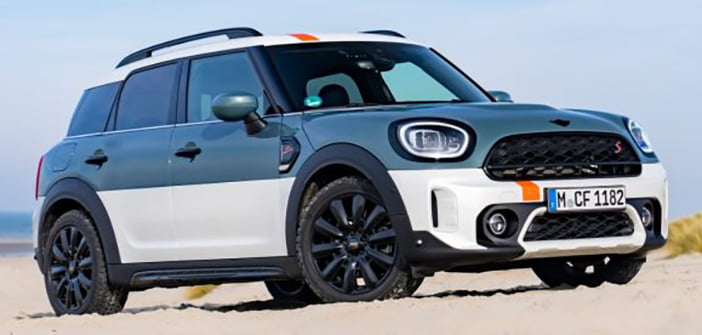
+++ On the 8th of June 1948, the first PORSCHE to receive road approval was a 356 “No.1”. Fast forward 75 years and the folks from Zuffenhausen will celebrate the anniversary with a special 1 hour event that will be live-streamed for the whole world to see. It’ll be broadcasted in English and German, and will consist of 5 different acts: Heritage, Zeitgeist, Performance, Pioneering Spirit and Dreams. The festivities will include everything from music, lights, and choreography to past and current models. More importantly, Porsche “will offer a look forward to its vision of the sports car of the future”. That’s not much to go by at this point but the company is unlikely referring to the long-rumoured 911 ST as that one will be a celebration of the past with a modern twist. For what it’s worth, the use of the word “Vision” suggests it will be a concept rather than a production model. There have been quite a few Vision-badged Porsche concepts in recent years. What could the new one be? There are several plausible scenarios, and all of them involve electrification. We might get an early look at the all-electric 718 sports car coming in 2025 or a first taste of the already confirmed hybrid 911. I’m going to exclude the all-electric, third-generation Cayenne as well as the 3-row SUV: both of which were announced recently. Of course, the most alluring assumption one can make is a hypercar to supersede the 918 Spyder. Before you get too excited, Porsche has said a new flagship won’t come out anytime soon as battery technology needs to evolve first. Michael Steiner, an executive board member of Porsche’s R&D, said the new battery pack is currently being developed with the Cellforce Group subsidiary company and will be presented within the next two years. Future models will eventually get the new battery pack, but more work will be necessary to better suit a hypercar. With Porsche planning to show a concept instead of a production-ready model, could we be getting a preview of a new hypercar? We’ll find out on 8 June. +++
+++ STELLANTIS will need 1 or even 2 additional large factories for electric vehicles batteries in the United States to reach its output targets, the company’s chief executive, Carlos Tavares, said on Tuesday. Speaking to journalists at the inauguration of a so-called gigafactory in northern France, Tavares said the Franco-Italian carmaker would need more similar plants in North America, where it already announced plans for two sites. The U.S. Inflation Reduction Act had created “very favourable” investment conditions in the country, Tavares added. Stellantis, whose brands include Fiat and Peugeot, is targeting a global battery production capacity of battery cells equivalent to 400 gigawatt-hours (GWh) by 2030. It has already announced 1 plant in Canada and 1 in the U.S. state of Indiana, on top of 3 European gigafactories with a total capacity of 120 GWh. +++
+++ TESLA boss Elon Musk has announced that the second-generation Roadster has been delayed yet again. The long-awaited Roadster is now expected to reach production by the end of 2024. Musk admitted that Tesla is certainly testing the patience of Roadster reservation holders. The new Roadster was revealed in 2017 and was originally supposed to enter production in 2020. A 2 seconds 0-100 kph time and 400 kph top speed are the headline figures. The Roadster also has a claimed range of 1.000 km with power stemming from a 200 kWh battery pack. It even has seating for 4, despite being a hypercar. The Roadster is expected to start at around $200,000 (approx. €270.000 in the Netherlands) with a limited-run Founder’s Series edition coming in at €335.000. For the last 6 years it has been possible to reserve a base Roadster for $50.000. It will be interesting to see if the Roadster actually does enter production in the 4th quarter of 2024, 7 years after it was first shown to the world. Tesla clearly doesn’t care too much about premium vehicles anymore and is undoubtedly becoming more and more mainstream. For example, the automaker isn’t bothering with right-hand drive versions of the Model S and X for the United Kingdom, Irish, Australian and Japanese markets. This could suggest the S and X will be discontinued entirely in the near future, with the Model 3 and Y being far more profitable for Tesla. Clearly, high volume products like the 3/Y, Cybertruck, Semi and a €27.000 “Model 2” are the priority. Therefore, does launching the $200k+ Roadster make any sense as Tesla looks to pivot from being a BMW/Audi/Mercedes rival to more of Volkswagen/Toyota competitor? I’m not so sure. +++
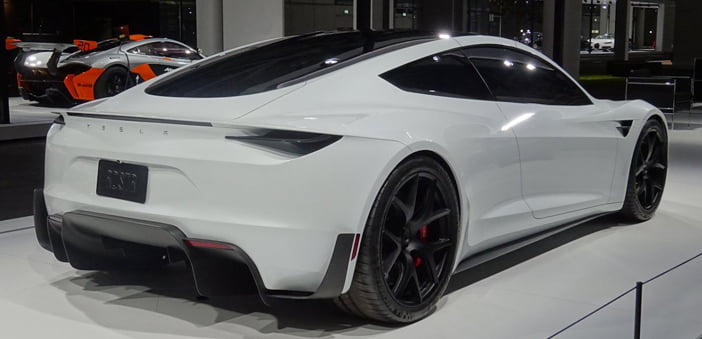
+++ TOYOTA will invest another $2.1 billion in an electric and hybrid vehicle battery factory that’s under construction near Greensboro, North Carolina. The plant will supply batteries to Toyota’s huge complex in Georgetown, Kentucky, which will build Toyota’s first U.S.-made electric vehicle, a new SUV with 3 rows of seats. The plans, announced Wednesday, won’t immediately create any more jobs at either the Kentucky or North Carolina factories. Toyota plans to employ 2.100 workers at the battery factory, which will start production in 2025. The investment will prepare infrastructure for expansion. It brings the total investment in the Randolph County plant to $5.9 billion to meet the company’s goal of selling 1.8 million electric or hybrid vehicles in the U.S by 2030. Toyota broke ground to begin building the plant in 2021. The 9 million-square-foot Kentucky complex now employs 9.500 people who make the Camry, RAV4 Hybrid, several engines and other components. The company says jobs will shift to the new electric vehicle when production starts in 2025. The North Carolina battery plant will have 6 battery production lines, 4 for gas-electric hybrid vehicles and 2 for fully electric vehicle batteries, Toyota said in a statement. The site near Greensboro is relatively close to many of Toyota’s existing U.S. auto assembly plants in Missouri, Kentucky, Indiana, Alabama and Texas. “With this proactive infrastructure investment, we will be able to quickly support future expansion opportunities to meet growing customer need”, Sean Suggs, president of Toyota Battery Manufacturing North Carolina, said in a statement. Toyota plans to sell 2 million zero emission hydrogen and battery electric vehicles worldwide per year by 2030. In the U.S., the company plans to sell 1.5 million to 1.8 million vehicles by 2030 that are at least partially electrified. Toyota’s new president Koji Sato has promised what he called an aggressive shift on “electrification” of vehicles including hybrids. The company has been criticized by environmental groups for falling behind in electric vehicle sales and relying on hybrids, which burn gasoline, for future sales. Toyota now offers the BZ4X electric crossover, built on what’s called the e-TNGA platform. That stands for “Toyota New Global Architecture” and is also used in its Prius and Lexus models. The electric platform was developed in collaboration with Subaru. The BZ4X is available in Japan, the U.S. and parts of Europe, such as Germany, the Netherlands and Britain, as well as China and Thailand. Toyota also recently announced a new electric car to be sold in China, called BZ3. It will use technology developed with Chinese EV manufacturer BYD Co. in a collaboration that also includes state-owned Tianjin FAW and other partners. +++
+++ We’re only a week away from the world debut of VOLVO ’s smallest SUV to date, the all-electric EX30, and the teasing campaign is intensifying. The automaker has just released the most revealing photos so far of the EX30, accompanied by new details on the interior. The photos provide a glimpse both at the exterior design (which has already been uncovered in patent images) and the interior. One of the photos reveals a part of the front end, including the reinterpreted Thor’s hammer headlight signature consisting of multi-element LED lights that remind of the larger Volvo EX90. We also notice from this photo the significant curvature of the front bonnet and wings/fenders, which should result in an interesting look. Another photo gives us the best look yet at the EX30’s rear end, revealing the taillight signature (also composed of multi-segment led lights) the plunging roofline that results in a narrow rear window with a sizeable roof spoiler on top, and the C-pillars that give the EX30 a “floating roof” look. Inside, the Volvo EX30 goes for a typically Scandinavian minimalist yet welcoming ambiance, with the dashboard featuring a 12.3 inch portrait-style display at its center and a soundbar covering the entire upper portion of the dash under the windscreen; a first of its kind in a car. Inspired by home audio design, the soundbar brings several speakers together into one unit and can be combined with the optional Harman Kardon high-end sound system for outstanding audio quality, according to Volvo. This solution has also allowed Volvo to eliminate the speakers in the doors, therefore freeing up more storage space. For the same reason, the window switches have been moved to the centre console. Another interesting decision is the relocation of the glove compartment under the centre screen, making it easily accessible for both driver and passenger and roomier thanks to the extra space provided by the flat floor. Volvo also mentions the “extremely versatile” centre console that features a sliding system allowing passengers to choose exactly how they want to use the space. For example, the top of the cupholder can be slid out to hold a latte or smartphone, or moved back for more storage. In addition, the lower tunnel has a protective storage area for small items such as sunglasses or ear pods, whilst a bag can be placed in the large open space above. In the rear, passengers can store their phones in dedicated pockets in the front seat backs, with additional storage provided by a box that slides out from beneath the storage console. It’s worth mentioning that the 12.3-inch centre screen centralises all key driving information such as speed, charge levels, navigation, media, and controls: there’s no instrument panel behind the steering wheel, although a head-up display system appears to be present. The Volvo EX30’s infotainment system is powered by Snapdragon Cockpit Platforms from Qualcomm Technologies and has Google built-in features, including hands free help from Google Assistant, Google Maps navigation, and Google Play apps. Wireless Apple CarPlay functionality is also offered, in a first for a Volvo vehicle. Volvo also mentions that the EX30 uses new materials such as denim, flax and wool, as well as various textures and colours. For example, customers will be able to choose from four distinct interior “rooms”. The 2024 Volvo EX30 will be fully revealed on 7 June and will be available to order or pre-order in selected markets on the same date. +++
